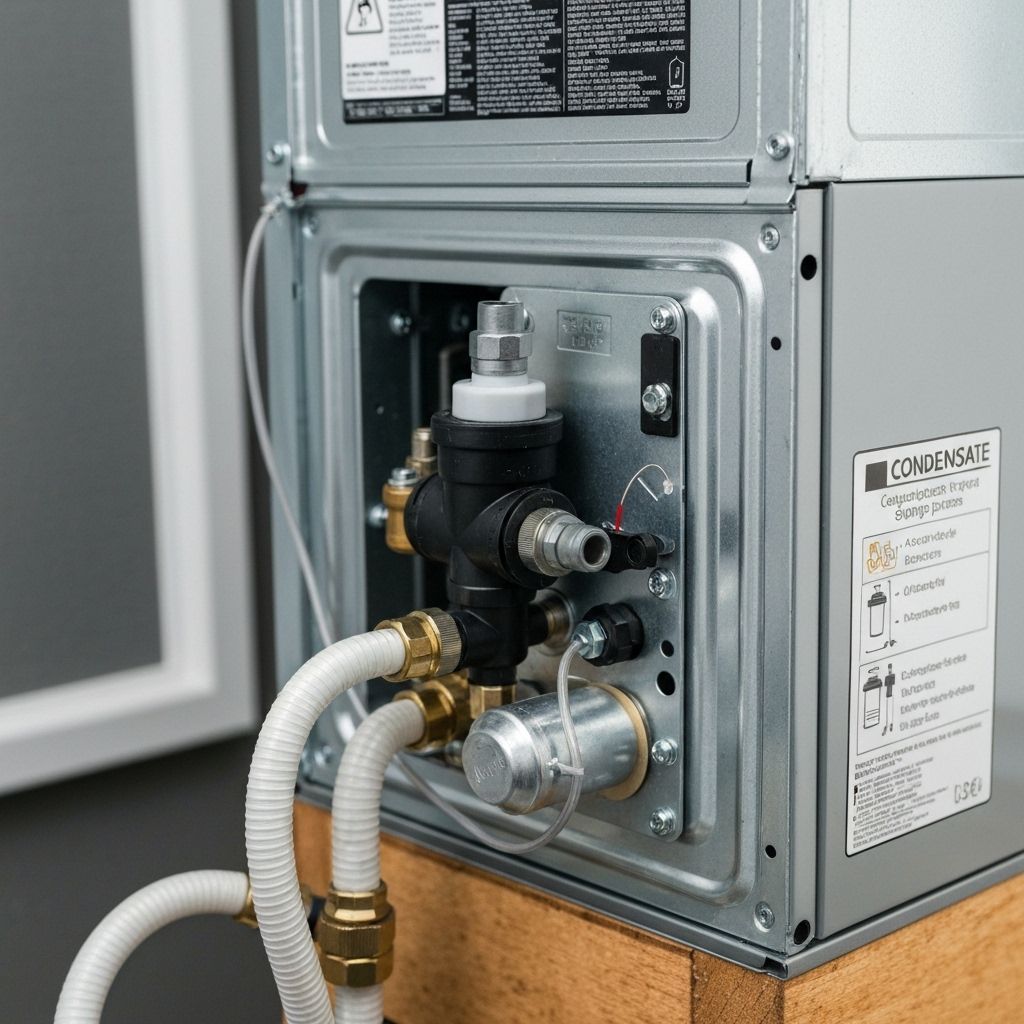Understanding Your Furnace's Condensate System
Modern high-efficiency furnaces produce water as a normal byproduct. Understanding the condensate system helps you identify and prevent leaks.
How Condensate Forms
High-efficiency furnaces (90%+ AFUE) extract so much heat from combustion gases that water vapor condenses inside the secondary heat exchanger. This is actually a sign of efficiency—the more condensation, the more heat is being extracted.
**Typical Production:** 5-7 gallons of water per day during peak heating
Components of the Condensate System
1. Secondary Heat Exchanger
Where water vapor condenses from hot combustion gases.
2. Condensate Trap
Prevents combustion gases from escaping while allowing water to drain. Must maintain a water seal.
3. Drain Line
PVC pipe that carries condensate away from the furnace. Must have proper slope (1/4" per foot minimum).
4. Condensate Pump (If Needed)
Pumps water upward when gravity drainage isn't possible. Contains a reservoir and float switch.
5. Drain Termination
Where condensate exits—typically a floor drain, laundry sink, or exterior drain.
Common Condensate System Problems
Clogged Drain Lines
**Cause:** Algae, mold, slime, debris
**Solution:** Professional cleaning with specialized tools
Frozen Lines
**Cause:** Inadequate insulation in cold areas
**Solution:** Proper insulation and heat tape
Failed Condensate Pump
**Cause:** Worn motor, clogged intake, float switch failure
**Solution:** Pump repair or replacement
Cracked Trap
**Cause:** Age, improper installation, freezing
**Solution:** Trap replacement
Improper Slope
**Cause:** Installation error, settling
**Solution:** Drain line re-routing
Signs of Condensate System Issues
- Water pooling around furnace
- Gurgling or bubbling sounds
- Furnace short-cycling
- Error codes on thermostat
- Musty odors
Maintenance Requirements
Homeowner Tasks:
- Monitor for leaks monthly
- Keep area around furnace clear
- Report unusual sounds or odors
Professional Tasks:
- Annual drain line cleaning
- Condensate pump testing
- Trap inspection and cleaning
- Proper drainage verification
- Component replacement as needed
Why Professional Service Matters
Condensate systems involve:
- Proper venting and drainage codes
- Electrical components (pumps)
- Gas appliance safety
- Specialized diagnostic tools
- Manufacturer-specific designs
DIY repairs can lead to:
- Carbon monoxide hazards
- Electrical shock
- Incomplete repairs
- Voided warranties
FurnaceLeak.ca Condensate Services
Our certified technicians specialize in:
- Complete condensate system diagnosis
- Professional drain line cleaning
- Condensate pump service and replacement
- Trap repair and replacement
- System optimization
- Preventive maintenance
We service all major furnace brands including Lennox, Trane, Carrier, Goodman, Rheem, York, and more.
Condensate System FAQs
Q: Is it normal for my furnace to produce water?
A: Yes, if you have a high-efficiency (90%+) furnace. This is normal and expected.
Q: How often should the condensate system be serviced?
A: Annually as part of regular furnace maintenance.
Q: Can I clean the drain line myself?
A: While possible, professional cleaning is recommended to avoid damage and ensure thorough cleaning.
Q: What if my condensate pump fails?
A: Your furnace will shut down to prevent water damage. Call for immediate service.
Contact FurnaceLeak.ca at 604-704-0300 for expert condensate system service throughout Metro Vancouver.
Need Professional Furnace Leak Repair?
Don't let a furnace leak damage your home. Contact FurnaceLeak.ca today for fast, expert service throughout Metro Vancouver.
